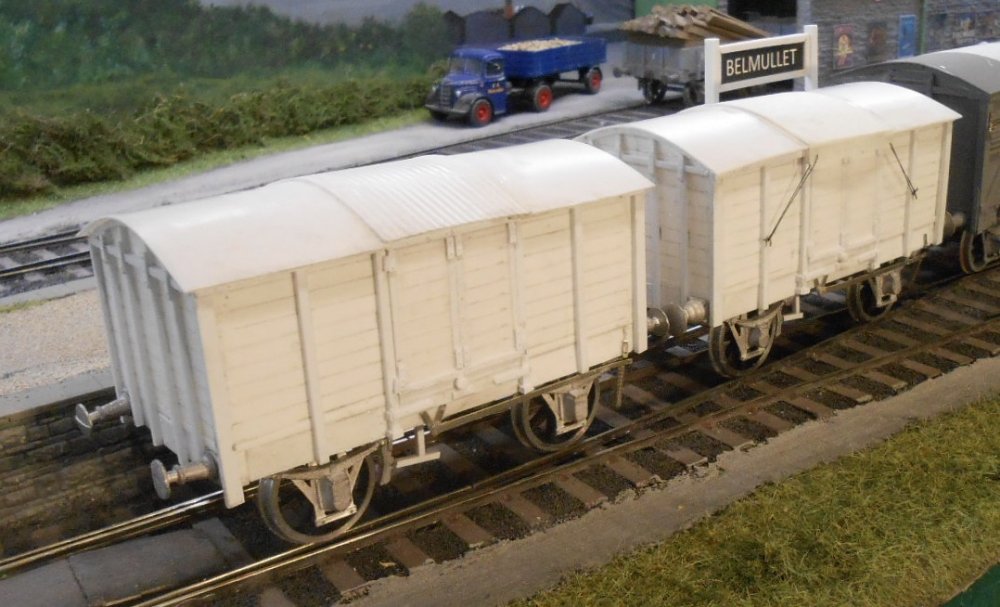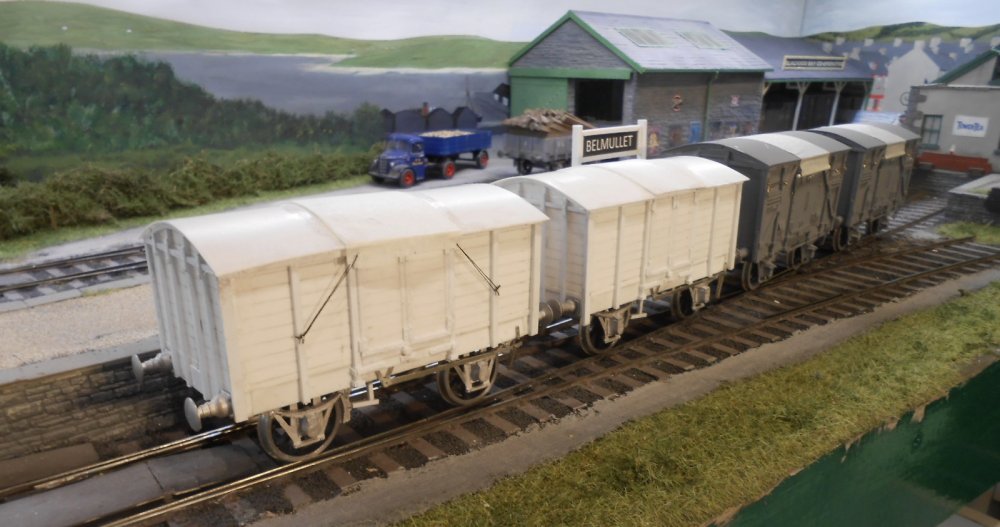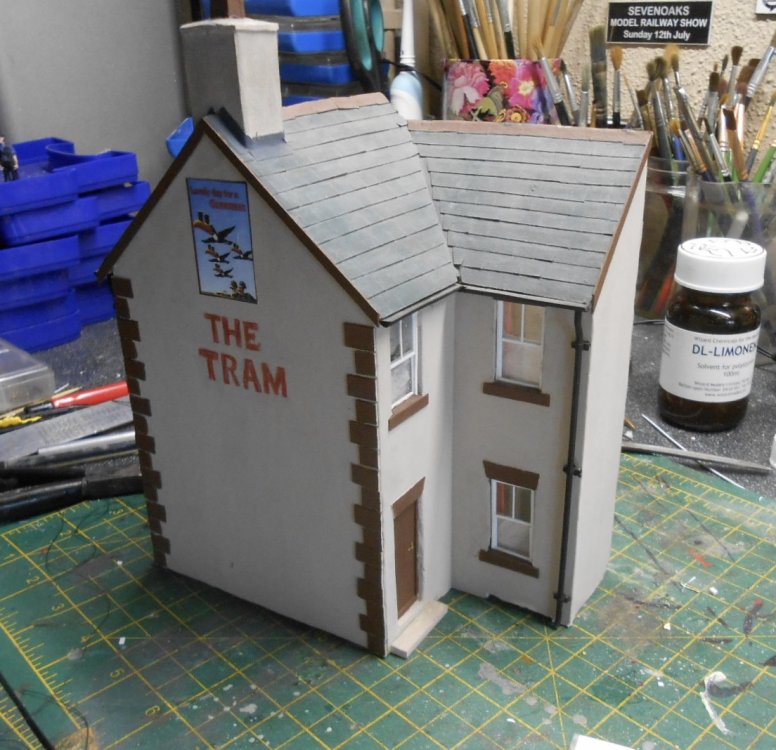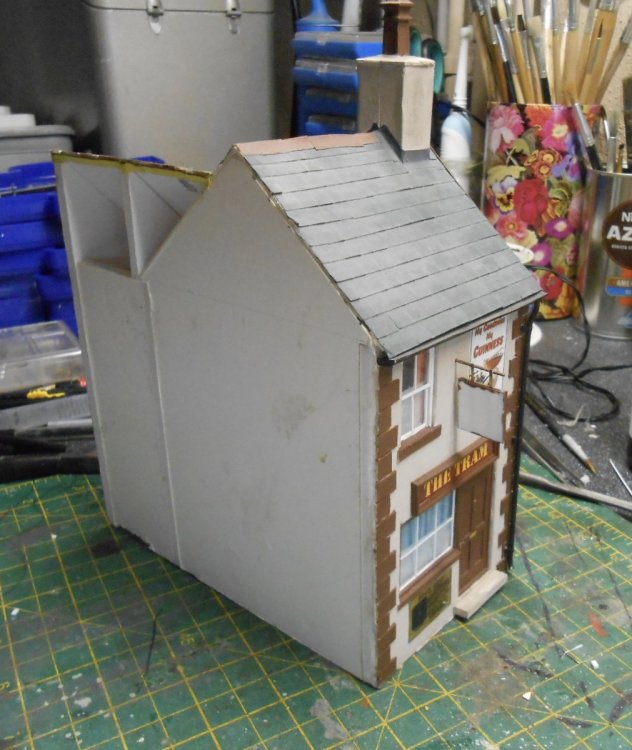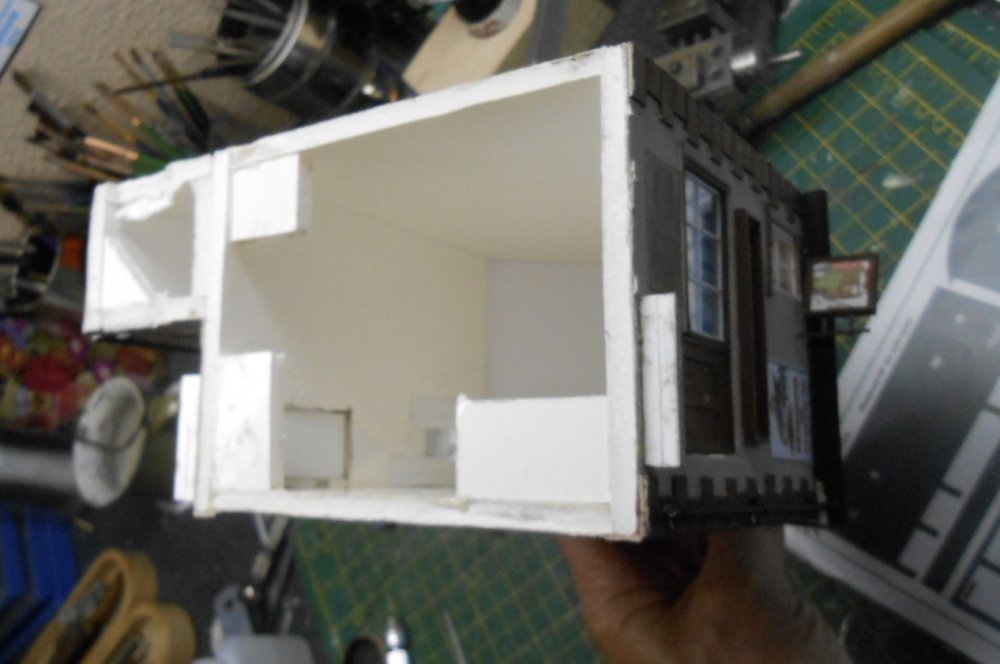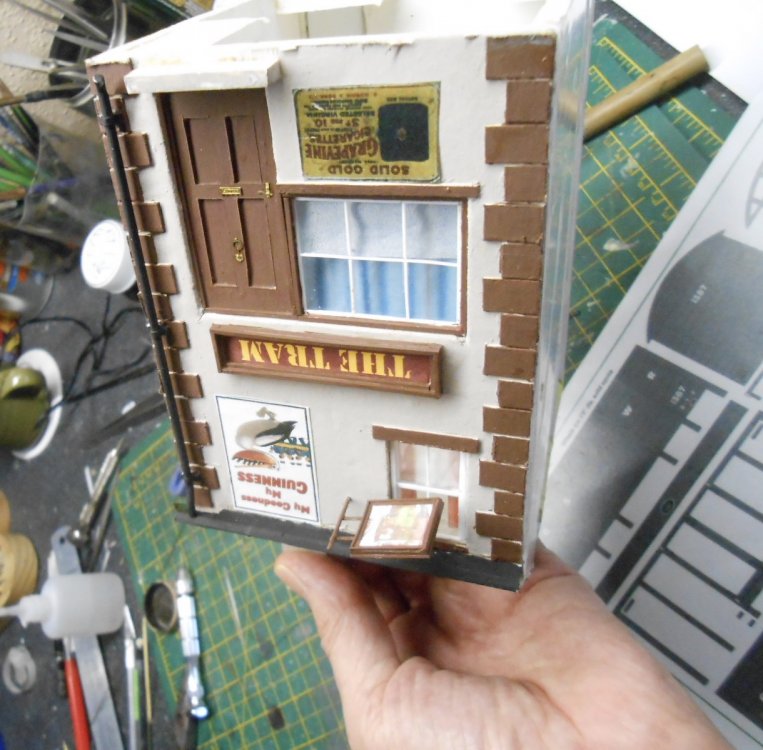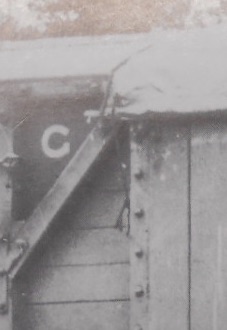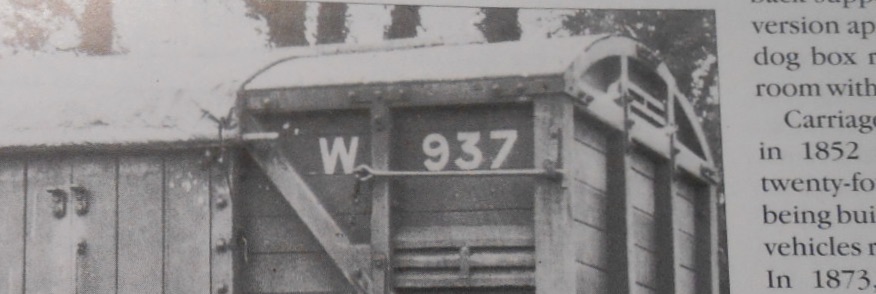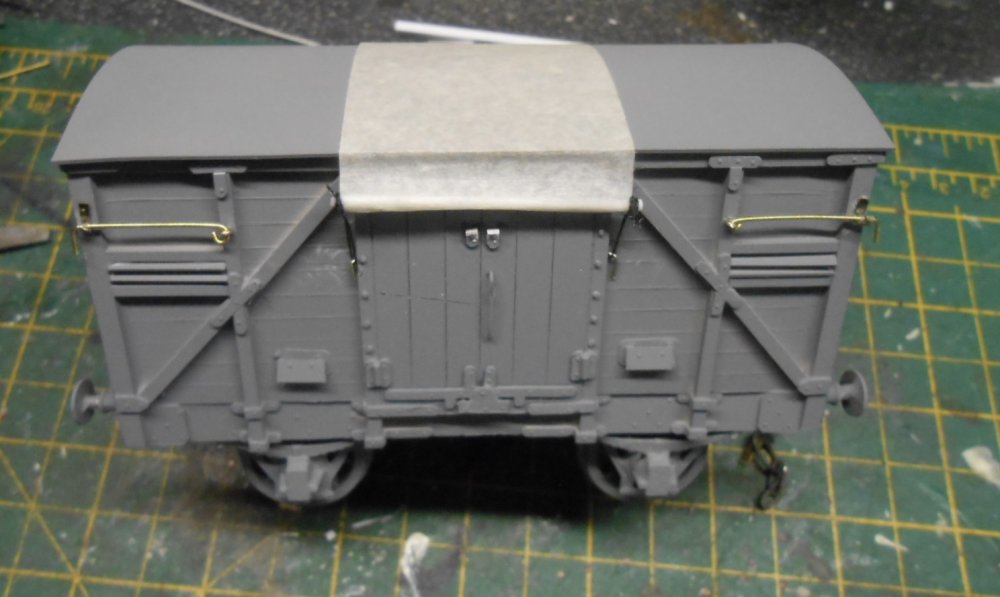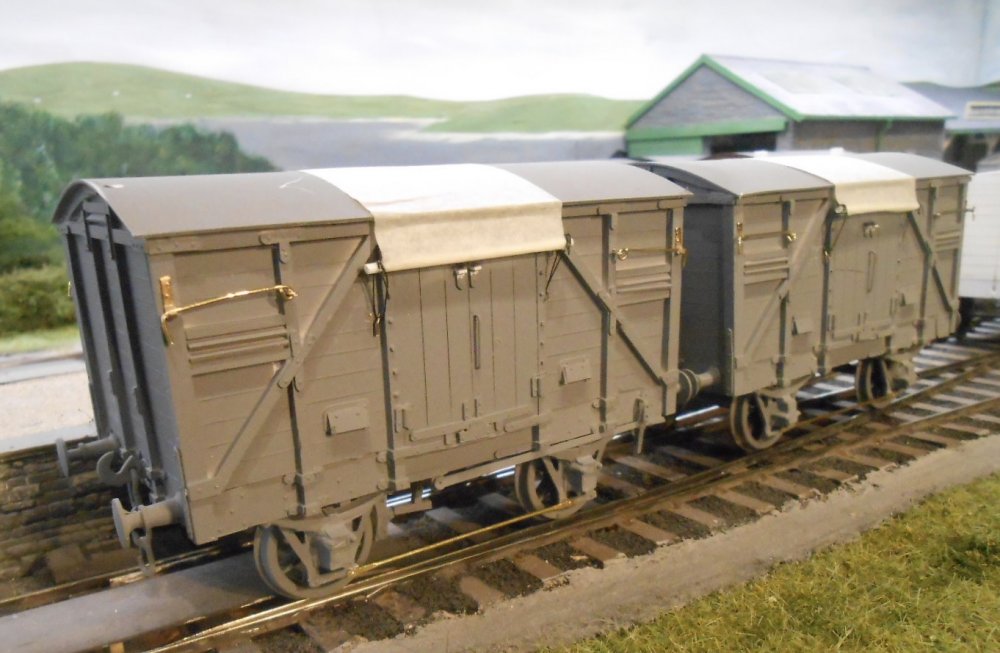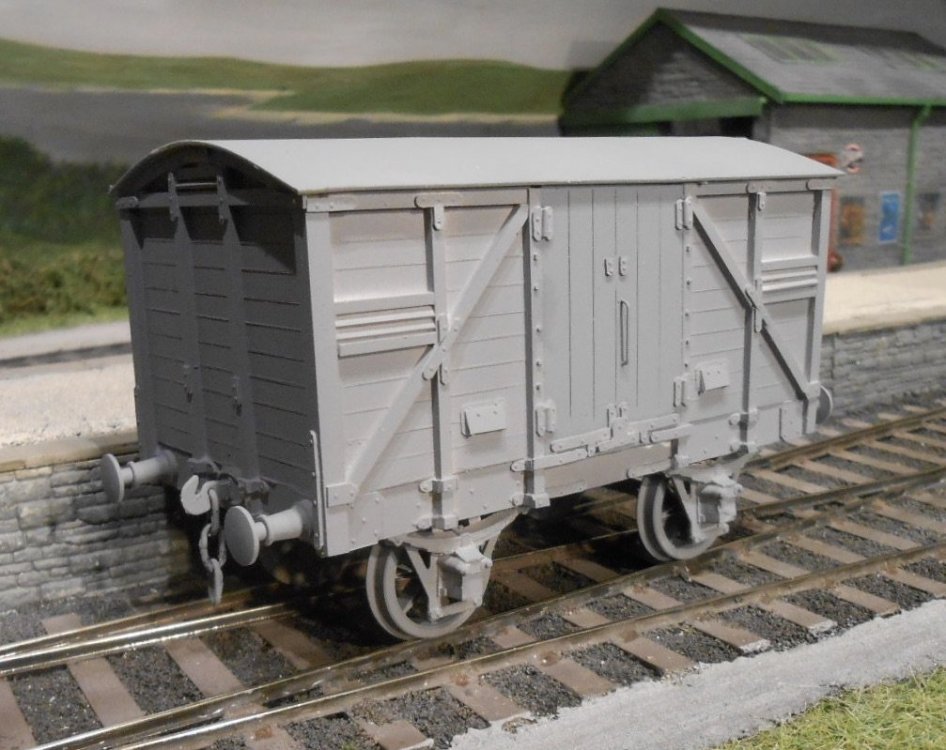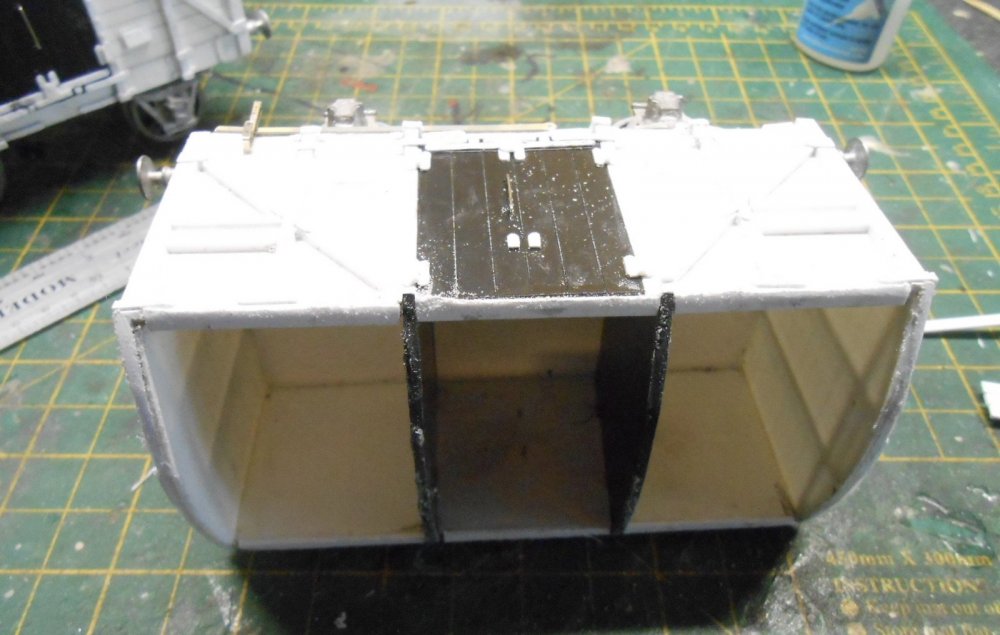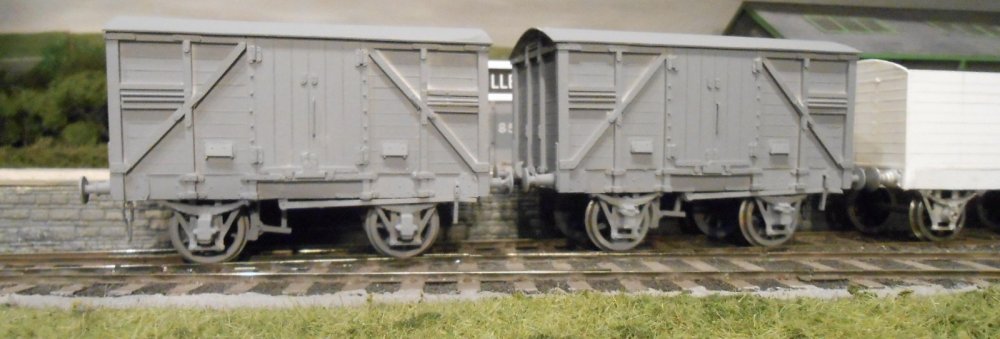
David Holman
Members-
Posts
4,359 -
Joined
-
Last visited
-
Days Won
117
Content Type
Profiles
Forums
Events
Gallery
Everything posted by David Holman
-
Their compact pressure washer is half the price of a similar Karcher and has great reviews too.
-
Being in the middle of a modelling project that involves waiting for paint to dry, thought I'd instead share a few more exhibition memories, focussing this time on the visitors. There is no doubt that modellers can be a strange and eclectic bunch, particularly to those who do not share our passion. As a regular exhibitor, I have the privilege, sometimes dubious, of meeting the full range of characters who frequent the shows. Most are really nice people and it is one of the pleasures of exhibiting that you get to talk to so many. The majority are keen to know more about the model railway, with the usual questions of 'Where is that?/What scale do you work in?/Why can you buy such models?' etc etc. When told most of the stuff they can see is completely hand built, quite a few will suggest they could never do that sort of thing - so it is nice to be able to explain that a lot of techniques are really quite simple & it is more about time and patience than anything else. The ones I especially like are those who like to share their own knowledge and quite often a real exchange of ideas results, so it is a good job my friendly operator John can keep things going while I talk to the punters. You learn so much too, not least in the case of Galteemore, of this parish, who has given me several lessons on the correct pronunciations of Irish place names! Prototype information is always appreciated and I've acquired various drawings and photos from folk I've met. Most people are very positive, though there was one instance when a gent asked what period my Fintonagh layout was meant to represent. When I told him it was the late 1930s, he sniffed and said it couldn't be because my Guinness advert was later than that, before wandering off. Feel sure there are better ways of offering advice! On the other hand, many years ago now, was helping operate a layout called Groombridge, owned by our then club chairman Alan. He was a fine modeller and Groombridge was a scale model of the actual station. However, on this particular morning, a gentleman also asked the question about period and actual time of year. When told it was summer mid 1930s, he gently pointed out that the area behind the signal box was incorrect. His father had been signalman at the time and always grew runner beans by the line side. Alan took great delight in making sure there was a small addition to the scenery next time it went out - much to our visitor's approval. You get a few characters, such as the ones who delight in trainspotting and actually note all the numbers of the locos on show. Children can be great fun, though not the ones who like to poke and touch everything. Most are just as interested as the adults though. Remember talking to one dad and asked his son if he had a model railway. No came the reply, but 0 gauge was being built for him in the loft, with Gauge 1 for dad in the garden. Nice! Then there was the chap sporting an Aston Martin wind cheater. When I casually enquired if he has come to the show in it, his reply was to the positive - though he did alternate it with his Bentley!
-
Plasticard, JB. Same as the MGW vans. I use the Alphagraphix card kit as a drawing only.
-
GSWR vans Two more vans based on an Alphagraphix card kit. Built in the same way as the MGW versions, but thankfully with a lot less strapping and gingerbread. Hence got them built somewhat quicker. My 'mixed fish' train for the J19 only needs three wagons, so one of the GSWR models is going to be painted in original [black] livery and with a canvas roof covering the central section. The 1950s version has gained a sheet of wiggly tin for this bit, in this case Slater's plastic. The wagons run on 3'7 spoked wheels, which means they sit fractionally higher at the buffer beam, though the roof line is still lower than the MGW versions. Couplings still need to be added.
-
Quite remarkable. The way the church rises above the frontage is quite something. Must have taken a lot of planning too, with all those complex roof lines.
-
Think you are right in both Patrick. Nevertheless, shows the value of a simple mockup, especially one in the right colours.
-
MGWR John. Scroll up to see origins, but yes, 'tis a drover's van. The Sligo had a couple too.
-
Dirty, but still subtle, while the correct track gauge (nicely blasted and painted) makes the whole scene hangs together really well.
-
Nice. Very nice. Many thanks!
-
Great thread and fascinating info as ever.
-
Not surprised to see that even the control equipment is an architectural masterpiece! DCC certainly not two wires. If only...
-
Never into war gaming itself, but always interested in how non - railway modellers do things. There are techniques out there we can learn from and master craftsman Gordon Gravett is a keen advocate of such things, being a professional model ship builder in the real world.
-
IRM/Accurascale Welcomes Paul Isles On Board as Project Manger
David Holman replied to Warbonnet's topic in News
O gauge models and accessories mentioned I see. Are we to be tempted by something in the larger scale? -
One for the Bantry boys maybe?
-
Lovely work and you CAN see the weathering, but the effect is really subtle and understated.
-
Thanks John and indeed everyone for the kind and positive remarks. Retired these days and Covid 19 certainly enables plenty of spare time. However, even when working [I was a primary headteacher and then schools advisor], doing 80-100 hour weeks in term time, found that a bit of modelling time was very important for my well being in what was an often stressful job. Much of this type of modelling is essentially fairly simple and repetitive & like most apparently complex things, breaking them down into easy stages is half the battle. I guess that is where experience counts, though believe me, I regularly still get things wrong. The Tram Inn, see pics below, is indeed fairly small - mainly because it is only half relief and designed to blend into the painted back scene. As you can see, it is made from 5mm foam board, covered in watercolour paper and then painted to look like render. Have turned it upside down, partly to show the construction, but also to show one of my favourite dodges for making guttering, where I just use 80thou plasticard, rounding one edge to look like half round. From a normal viewing angle, it can't be seen & is very quick and easy to do. Buildings are a good way into making something from scratch, because they don't move, so you can concentrate on making them look nice. Would say making wagons is probably a good first step with rolling stock, but coaches and locomotives do require a fair bit of skill, however there are some nice kits out there to get you started, while there are some excellent threads on this site with folk adapting ready to run models to Irish prototypes too.
-
Just when I thought I'd finished building the MGW vans, was looking through Ernie Shepherd's bible on the railway and discovered the lovely photo which Roger had clearly used as part of his planning for the Alphagraphix card kit. Up till now, I'd been using the latter, along with a rather grainy photo of the prototype, which I now know is a copy of a print of a copy etc, etc. As the cropped details show below, there was not only the bracing between the axles to add, but the canvas roof [and associated fixings], along with some hooks and brackets to hold the doors open. Hence spent a couple of hours this afternoon, faffing around with all manner of things from plastic strip brass wire, tiny eye rings [from the Dingham couplings etch], masking tape and thin cotton to create all of the above. Hopefully you can work out what went where from the photos.
-
Severn Models do an etched lever frame and like all their stuff it is a little jewel. Advice is to assemble with cyano, so worth checking their website to see if it matches what you want.
-
Nothing fancy, because there were on!y two slats on the side ones and just one on the ends. Used 60thou square section for the outside frame and 20 x 80 for the slats, fitting them in situ. Applied solvent and then held the slat in place with fine nosed pliers for 30 seconds till the solvent grabbed enough. Did a single in each position around both vans, by which time the solvent had gone off enough to add the second. Noticed that Warb was making his louvres for his church on the workbench, making half a frame and adding the slats to that, while Archers, the transfer rivet folk, have louvres in their catalogue, which could be very handy if they had the size you want. Otherwise, louvres are a complete pain, I think, including the fact that the spellchecker here insists on calling them lovers!!!!
-
Finally managed to finish the two wagons. Has taken around 24 hours modelling time for the pair, so not too bad I guess, given the number of pieces and amount of work. Most of the final stuff was making the louvres and then it was a case of fitting the roof. A small moment of inspiration here came from a photo of a converted turf coach, where internal boarding resulted in thicker than usual sides. Seemed to me this idea would be useful to help fix the roof better, so added 100 x 40 thou strip all round, then filed this to the profile of the roof. Hence got a good area for the D-Lemonine to do its welding. This solvent really has been useful. It may take longer than MEK or similar solvents, but the evaporation is much slower, allowing plenty of time to position the roof, whereas MEK evaporates like mad, so much so that if you left the lid off the bottle I suspect most of it would be gone in an hour. Anyway, an all round scrub with the glass fibre pencil, then a wash in warm water & they were ready for priming. Actual painting and lettering must wait until I've done the two GSWR vans first though.
-
There is something special about large scale layouts when they are done well and that second picture is a stunner. European and American outline examples have taken off here in recent years, the latter especially. The logistics of transport and setting up are quite something though! As for floor to ceiling layouts, Richard Chown's French layout was quite something. The deck of the viaduct was about 2 metres off the ground. Never one to shirk a challenge, was Richard.
-
Interesting way of doing the louvres. Works very well too.
-
A stunningly good model. Well done Phil. Presume it is 4mms scale but could just as easily be 7, 10 or 16 from the photos. Really fine work.
-
Indeed! Should have included both, but have at least had the pleasure of driving to them in decent weather. More that I can say about the Ring of Kerry - three attempts, but rain and low cloud each time.
-
Like Mick, it is far easier to list the ones I have done, but if ever somebody invents I time machine then the Swilly, Tralee and Dingle, Valencia Harbour, Derry Road, the tramway section of the Cavan and Leitrim, plus the CVR would all be on my list.
.png.c363cdf5c3fb7955cd92a55eb6dbbae0.png)

